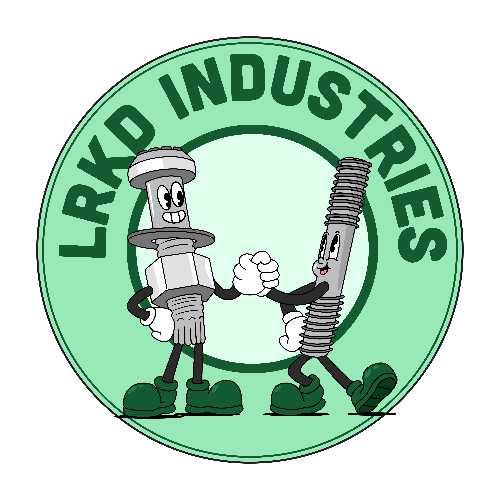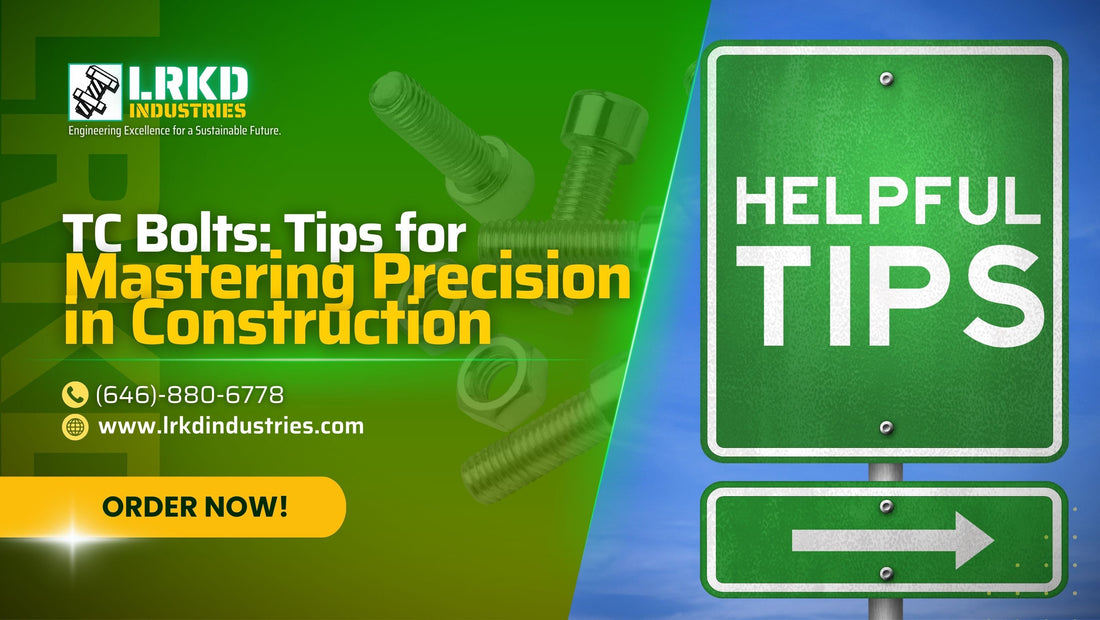When it comes to constructing durable, safe, and reliable structures, even the smallest components play a vital role. One such unsung hero in construction is the Tension Control Bolt (TC bolt). Designed for strength and precision, these bolts are indispensable in projects ranging from skyscrapers to bridges. But how do you ensure you’re using them effectively? Let’s dive into some essential tips for mastering tension control bolts while exploring their importance in modern construction.
What Are Tension Control Bolts, and Why Are They Crucial?
Tension control bolts are specialized fasteners widely used in structural steel construction. What sets them apart is their unique design—a splined end that breaks off once the proper tension is achieved. This feature ensures uniform installation, making TC bolts highly reliable for critical applications.
Think of tension control bolts as the heartbeat of a structure. Just as precise calibration keeps machinery running smoothly, these bolts maintain the integrity of your construction. Paired with aircraft cable systems, which add stability and support, tension control bolts enable architects and engineers to build structures that can withstand tremendous stress.
10 Essential Tips for Using Tension Control Bolts
Let’s break down actionable tips that will help you maximize the potential of tension control bolts in your projects:
1. How Do You Choose the Right Bolt for Your Application?
Not all tension control bolts are created equal. They come in different grades, coatings, and sizes to suit specific applications. For instance, galvanized TC bolts offer superior corrosion resistance, making them ideal for outdoor or marine environments.
Pro Tip: Always consult the project’s specifications to ensure compliance with required standards.
2. Have You Inspected Bolts and Tools Before Use?
A malfunctioning tool or a defective bolt can derail an entire project. Regularly inspect bolts for visible damage, and ensure your torque wrench or shear wrench is calibrated and functioning correctly.
Example: Imagine installing bolts on a suspension bridge and realizing mid-way that your wrench isn’t calibrated. Save yourself time (and panic) by double-checking beforehand.
3. Do You Understand the Pre-Load Requirements?
Pre-load refers to the tension applied to a bolt to keep the joint secure. Different projects require different levels of tension, and exceeding or falling short can compromise safety.
Analogy: Think of it like inflating a tire—too much air, and it risks bursting; too little, and the vehicle won’t perform efficiently.
4. Are You Following Manufacturer Guidelines for Installation?
Each manufacturer may have specific guidelines regarding installation tools, tightening sequences, and torque settings. Ignoring these can lead to improper installations.
Actionable Tip: Always read and follow the manufacturer’s instructions for optimal results.
5. Are You Using the Correct Tightening Sequence?
To distribute tension evenly, follow a systematic tightening sequence. Typically, a star pattern is recommended for bolted connections.
Why It Matters: Uneven tension can lead to joint failure or misalignment, especially in high-stress structures like wind turbines.
6. Are Your Tools Clean and Well-Maintained?
Dirt, grease, or debris on tools can interfere with accurate tensioning. Regularly clean your tools and store them properly to ensure longevity and reliability.
7. Have You Trained Your Crew on Proper Installation Techniques?
Even the best tools and bolts won’t guarantee success if the installation crew isn’t trained. Invest in hands-on training to familiarize workers with tension control bolt systems and equipment.
Real-World Example: A construction company that regularly trains its team reported fewer installation errors and faster project completion times.
8. Are You Monitoring Environmental Conditions?
Temperature, humidity, and other environmental factors can affect bolt performance. For instance, extreme cold can make materials brittle, while excessive heat may reduce their strength.
Tip: Schedule installations during optimal weather conditions whenever possible.
9. Do You Document and Verify Installations?
Keep a log of bolt installations, including details like tension values, date, and the installer’s name. This documentation can be invaluable for quality assurance and future inspections.
10. Are You Regularly Inspecting Bolted Connections?
Maintenance doesn’t stop after installation. Schedule routine inspections to check for loosening or wear, especially in structures exposed to dynamic loads or harsh conditions.
Metaphor: Think of it as a routine doctor’s check-up for your structure’s health.
Why TC Bolts and Aircraft Cable Systems Go Hand in Hand
While tension control bolts secure the joints, aircraft cable systems provide additional reinforcement. Together, they create a harmonious balance of tension and stability. For example, in suspension bridges, TC bolts anchor the steel plates, while aircraft cables distribute weight and reduce stress on individual bolts.
Building with Precision and Confidence
Tension control bolts may seem like a small piece of the puzzle, but their role in construction is monumental. By understanding their function and applying these tips, you can enhance safety, efficiency, and durability in your projects.
So, next time you’re on a construction site, take a moment to appreciate the precision and reliability of these bolts. After all, every great structure is built on the strength of its smallest components. Are you ready to elevate your next project with tension control bolts? Start by implementing these tips and see the difference firsthand!
Precision Mastery with Tension Control Bolts
Build with confidence and control! Our expert tips on Tension Control Bolts are designed to help you master the art of precision in structural connections. Whether you're working on a high-stakes infrastructure project or a fast-paced commercial build, our insights ensure every bolt is tensioned to perfection—boosting safety, speed, and structural integrity.
LRKD Industries empowers construction professionals to work smarter with the right knowledge and tools for tension control systems.
Contact LRKD Industries now and level up your bolting accuracy!
👉 Submit your plans today for a FREE consultation and expert guidance on tension control bolt applications.
📍 Address: 98 N Industry CT, Deer Park, NY 11729, US
📞 Phone: +1 646-880-6778
📧 Email: info@lrkdindustries.com
Need your files converted for Tekla? We can deliver ".dwg" format outputs compatible with your modeling and fabrication workflows.
For more information about our tension control bolt products, click here.
When every bolt counts, accuracy isn't optional—it’s essential.


